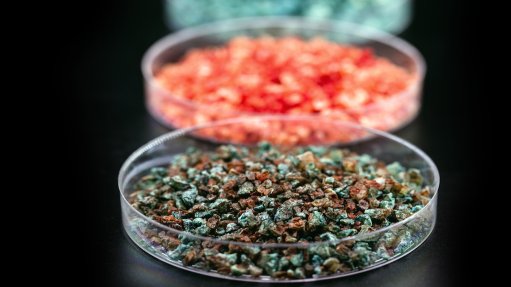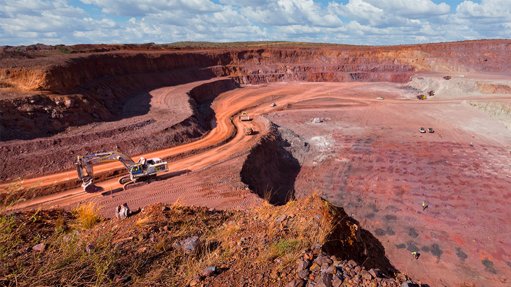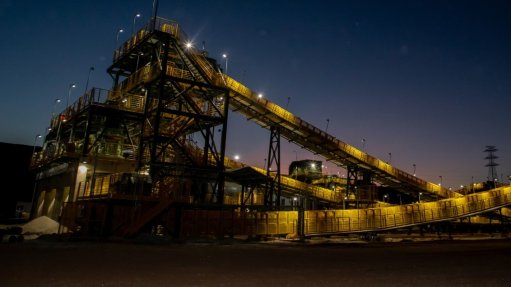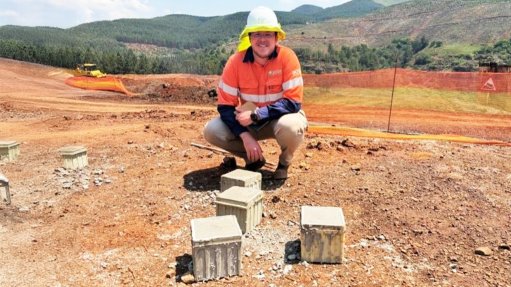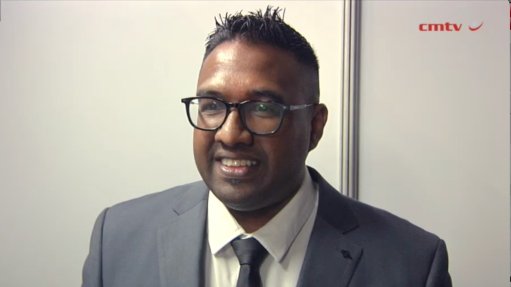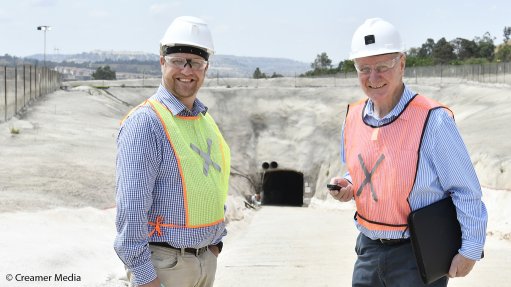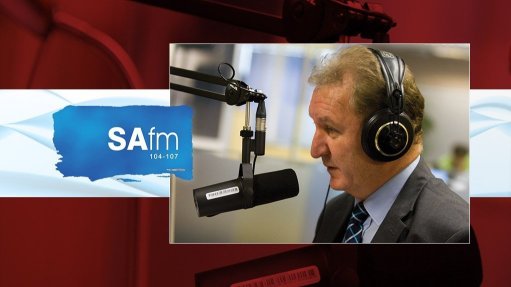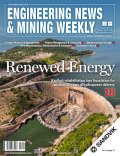Steel company’s optimism fuels technology investment appetite

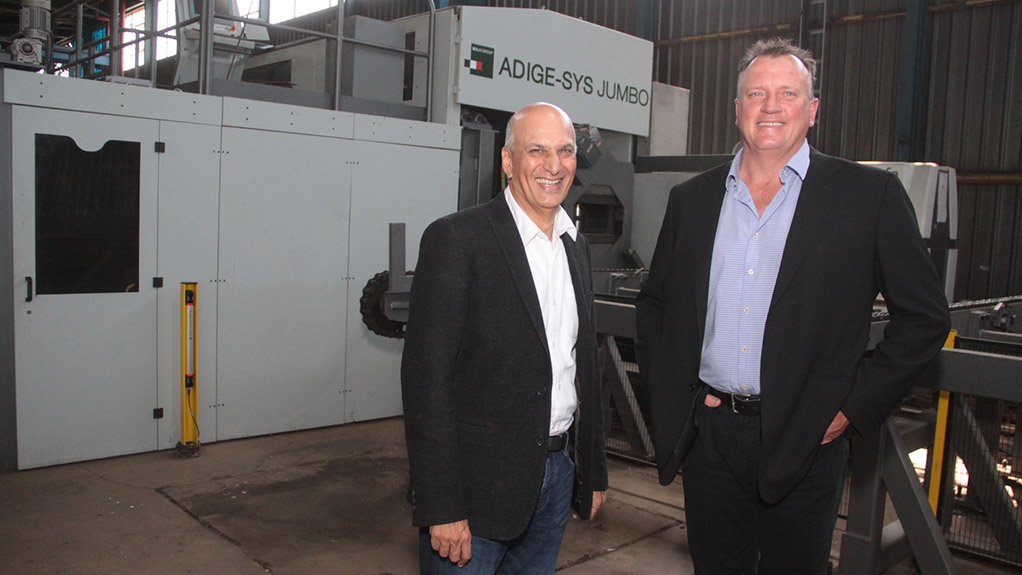
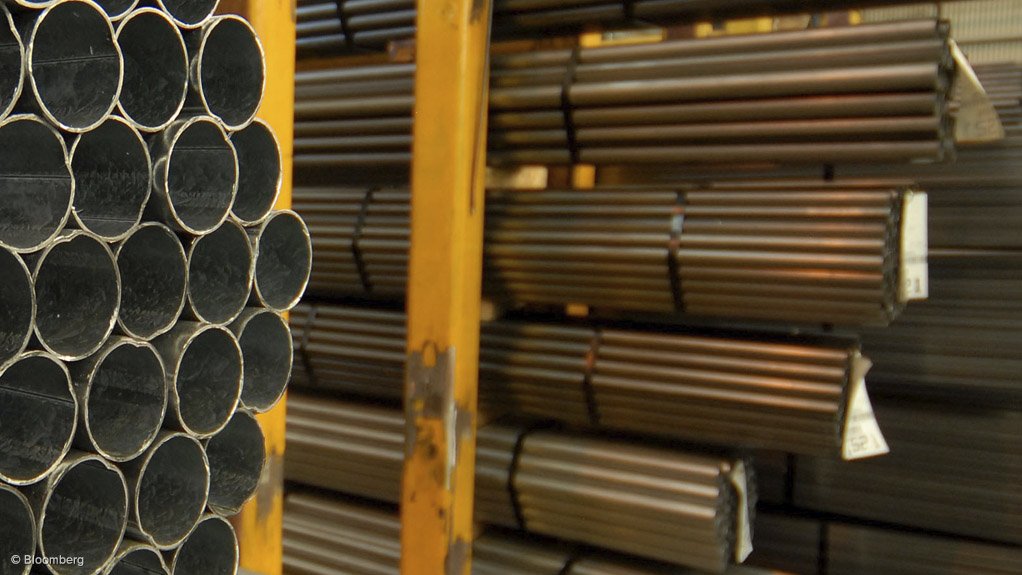
LT20 TUBULAR LASER Chadha (left) and Rippon’s investment in the LT20 was prompted by winning two significant power generation projects
TUBULAR INNOVATION The LT20 creates new possibilities and innovation for architects and structural designers
Photo by Bloomberg
Steel supplier and processing company Allied Steelrode’s optimism regarding long-term prospects for South Africa’s economy and steel industry has prompted it to continually invest in quality steel equipment.
Such an investment was made through the buying of the BLM Adige LT20 jumbo tube laser in 2015. The machinery allows for tubular steel structures to be built. It was in production by March last year.
Allied Steelrode executive director Warne Rippon and CEO Arun Chadha have long recognised the structural, architectural and mechanical advantages inherent in tubular steel. Tubular steel offers a lighter, more cost-effective option to conventional “I beams”. In addition, when tubular steel is welded together, it offers greater strength and makes welding easier.
“Our LT20 jumbo opens up a new range of design possibilities for architects and structural designers . . . many more innovative tubular structures can be designed,” Rippon enthuses. He looks forward to tubular steel structures featuring increasingly in everyday life, from the design and construction of shopping malls to airports and sport stadiums.
Applications and Investment
Motivation to buy the LT20 was solidified when Allied Steelrode won the contract to supply the complex structural steel for the iLanga and Kathu solar power projects, in the Northern Cape, in 2015. “We understand the need to enhance our customers’ processes,” Rippon and Chadha explain, adding that the LT20 is “another significant step along this trajectory”.
Rippon says the applications of the LT20 vary, as it can process tube for agricultural applications and meet the requirements of the heavy transportation, construction, mining, automotive, power generation, shipbuilding and petrochemicals industries.
Rippon explains that tube laser cutting is a comparatively recent innovation in the steel processing industry, as the processing of tubular steel involved time-consuming sawing and drilling. The LT20 is fully automated, requiring minimal operator intervention.
The LT20 can cut even the most complex geometries in steel tube, ranging in sections from 75 mm to 508 mm, and in lengths of up to 18 m. “Unlike many other lasers which can cut only up to 8 mm wall thicknesses, the LT20 can cut up to 16-mm-thick tube walls,” Chadha adds.
The LT20’s versatile five-axis laser cutting system is ideal for three-dimensional parts, as well as bent, hydro-formed or preassembled tubes or flat and pressed sheets, Rippon explains.
He adds that the LT20 frequently eliminates the need for time-consuming post-processing steps, compared with conventional processing technologies. When the machine produces a finished component in one cycle, there are no problems with storing semi-finished work, a factor which streamlines and increases productivity, Rippon says.
He adds that the LT20 can cut round, square and rectangular section tubes, as well as open structural sections, whether they are mild steel, high-strength steel, stainless steel, aluminium, alloys, brass or copper.
“It is possible to economically produce anything – from a one-off prototype to a production run of thousands in a fraction of the time that was previously required.”
Allied Steelrode also responded to market demands by investing in an Allied Steelrode Stretcher Material brand of stretcher-levelled steel products, Engineering News reported last month. The products are produced at the company’s dedicated steel stretching facility, located in Midvaal, Gauteng. Using the stretcher leveller has resulted in less material being scrapped by end-users, says Rippon.
In addition, the significant drive towards quality steel will result in manufacturers specifying stretcher-levelled steel, he adds.
The stretcher leveller also accompanies the latest and anticipated advances in laser technology, which will require that steel sheets are flat, as lasers are moving from gas to fibre. This will result in increasing the speed of the lasers, which means that it is critical to place stretcher leveller plates in the lasers.
“Anything other than a level piece of steel may potentially shatter the cutting tip of the laser,” Rippon states.
Performance despite Economic Challenges
Rippon does lament that the local economy is currently constrained and stagnating, which has put pressure on infrastructure and construction projects. The steel industry faces macroeconomic issues such as weak economic growth and political uncertainty.
“Although we are positive, it is a big call for the country that it is time to get moving. We cannot carry on floating in the doldrums like we have been for the past few years.”
However, Rippon remains confident about the long-term prospects of steel and that the economy will start moving from early next year.
“I think the economy’s going to move forward at quite a pace, and, hopefully, there will be a lot more capital investment in infrastructure and more job creation.”
To solidify this confidence in the steel industry, Rippon explains that Allied Steelrode has always been a company that “buys when everyone is selling”. The company has chosen to buy machines during down cycles, not only because a stagnation in the industry was expected by Allied Steelrode but also because major capital equipment purchases, such as stretcher levellers, can take up to two years before they start generating return on investment.
“We’ve geared ourselves to be responsive, and have been strategically leveraging into any growth opportunity that is due to gain momentum to make the most of industry changes,” Rippon concludes.
Article Enquiry
Email Article
Save Article
Feedback
To advertise email advertising@creamermedia.co.za or click here
Press Office
Announcements
What's On
Subscribe to improve your user experience...
Option 1 (equivalent of R125 a month):
Receive a weekly copy of Creamer Media's Engineering News & Mining Weekly magazine
(print copy for those in South Africa and e-magazine for those outside of South Africa)
Receive daily email newsletters
Access to full search results
Access archive of magazine back copies
Access to Projects in Progress
Access to ONE Research Report of your choice in PDF format
Option 2 (equivalent of R375 a month):
All benefits from Option 1
PLUS
Access to Creamer Media's Research Channel Africa for ALL Research Reports, in PDF format, on various industrial and mining sectors
including Electricity; Water; Energy Transition; Hydrogen; Roads, Rail and Ports; Coal; Gold; Platinum; Battery Metals; etc.
Already a subscriber?
Forgotten your password?
Receive weekly copy of Creamer Media's Engineering News & Mining Weekly magazine (print copy for those in South Africa and e-magazine for those outside of South Africa)
➕
Recieve daily email newsletters
➕
Access to full search results
➕
Access archive of magazine back copies
➕
Access to Projects in Progress
➕
Access to ONE Research Report of your choice in PDF format
RESEARCH CHANNEL AFRICA
R4500 (equivalent of R375 a month)
SUBSCRIBEAll benefits from Option 1
➕
Access to Creamer Media's Research Channel Africa for ALL Research Reports on various industrial and mining sectors, in PDF format, including on:
Electricity
➕
Water
➕
Energy Transition
➕
Hydrogen
➕
Roads, Rail and Ports
➕
Coal
➕
Gold
➕
Platinum
➕
Battery Metals
➕
etc.
Receive all benefits from Option 1 or Option 2 delivered to numerous people at your company
➕
Multiple User names and Passwords for simultaneous log-ins
➕
Intranet integration access to all in your organisation









